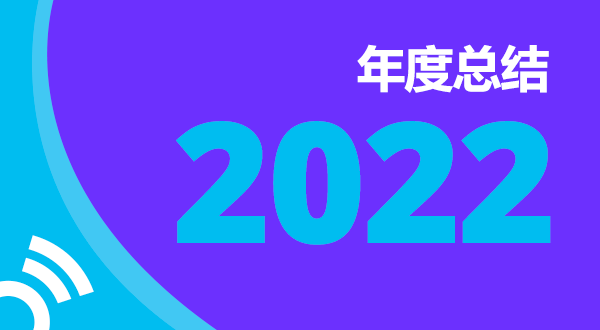When Google announced that it would be phasing out its Chrome browser support for third-party cookies in 2022, the message sent ripples of uncertainty throughout the programmatic advertising industry. The cross-site user tracking technology would no longer be relied on in the future. While Google’s announcement was expected, it solidified the reality of our new privacy-first digital advertising ecosystem. Once driven by ad targeting based on user data, digital advertising will now have to protect that very same user data.
The end of the cookie is top of mind across the ecosystem, and such changes in user targeting have the potential to spread to other areas of digital advertising, including mobile device IDs and the in-app environment. While mobile device IDs are immune to the phaseout of cookies, many are speculating that Apple and Google could move to eliminate their respective identifiers, and Facebook recently announced that it would no longer share device IDs with partners for mobile campaign measurement. This suggests that the entire industry, both web and in-app, may at some stage need to rely on new identity solutions. Publishers are rightfully concerned with the prospect of losing large sums of ad revenue, once they no longer have the ability to utilize their main methods of tracking users across websites and apps. Marketers are equally concerned that the digital advertising realm may soon offer limited options for them to leverage user data and achieve their desired campaign performance.
The wheels of change are in motion, yet it may not have the drastic impact that many fear. Cookies could even be considered an archaic and underperforming technology. Data shows that their role has been crumbling for some time. Browsers were already blocking 64% of cookies back in 2017, and figures suggest that reliance on cookies actually led to a 36% decrease in return on ad spend. Clearly the industry is longing for a revolution whereby it relies on newer, more advanced, and sustainable methods of user-targeting.
What Led the Industry to This Point?
Tightening Privacy Regulations
The General Data Protection Regulation (GDPR) came into effect on May 25, 2018, to regulate the processing of personal data and strengthen the rights of users across the European Union. The first move may have been made in Europe, but other regions have followed suit. The California Consumer Privacy Act (CCPA) went live on January 1, 2020, to protect the data rights of California residents, while countless other regulations are in development or due to launch across the globe.
Publishers are faced with ensuring that they communicate with their users regarding data collection while passing on user preferences to ad tech partners in a compliant manner. The rise of data privacy regulations caused purges of third-party cookies on sites across the web and meant that the scale of available user data for advertisers dropped. A study by the Reuters Institute showed that news sites in Europe reduced the number of cookies per page by 22% after the GDPR went into effect.
Browsers Turn Their Back on Cookies
Google wasn’t the first company to announce its intentions for the future of third-party cookies. Measures had already been taken by other popular browsers, such as Apple’s Safari and Mozilla’s Firefox. Apple introduced its Intelligent Tracking Prevention as far back as June 2017, in order to block third-party cookies on the Safari browser. Mozilla implemented cookie blocking by default for Firefox in September 2019. But with Google’s Chrome browser holding the lion’s share of usage (almost 60%), the tech giant is opting for a phased approach in removing its support for third-party cookies. Though cookies aren’t done with yet, the move to finding alternative, first-party data solutions to boost revenue from cookie-less traffic is now at the top of the agenda for every publisher.
How Can Publishers Rebuild Digital Advertising?
Publishers have the ability to take control and rebuild the digital advertising ecosystem. One that is powered by accurate, high-quality audience data without compromising the trust and privacy of the user. Here are some key insights into steps that can be made:
- Leverage your direct relationship with users and audiences to collect consistent and accurate first-party user information.
- Create audience segments that will be attractive to niche advertisers and demand partners with specific interests in your users, allowing them to deliver contextually-relevant advertising.
- Offer quality impressions over quantity — scale may well be a casualty as the rules of the digital advertising game are revised, but if this can be exchanged for high-performing audience data, both sides will profit.
What Is the Industry Working On?
In February 2020, the International Advertising Bureau (IAB) introduced a new initiative entitled Project Rearc (i.e., Project Re-architecture). The project is calling on advocates across the industry to work together on developing a new solution to fill the gap left by cookies (and likely device IDs). The aim is to satisfy the needs of addressable advertising and to work across different browsers while meeting the requirements of various privacy regulations.
Early project discussions hinted at a proposal around utilizing a user’s encrypted email or phone number as an identifier. This “identifier” would then be passed through the standard programmatic supply chain: publisher to SSP to DSP to marketer. However, this form of solution would require publishers to create registration walls for users to access their ad-monetized content and may not facilitate the tracking of users across sites. More recently, an IAB Tech Lab webinar in March 2020 highlighted that the key focus was to deliver technical standards and guidelines that facilitate a privacy-centric addressability solution alongside industry accountability.
Time will tell if Project Rearc delivers guidelines for the right solution and if it is a preferable option from a data privacy perspective. What’s for sure is that a long term solution is needed — specifically one that finds a balance between proper enforcement of user privacy rights and the relevance of ads. Without this, tech giants like Google and Facebook are set to profit from the changes more than any other entity, due to the fact that they’ve amassed the largest quantities of first-party data. However, consumer trust in these corporations is fragile and publishers will soon be closer to users than any other segment in the digital advertising ecosystem. Now is the time for publishers to adapt to the changes, take control, and capitalize on their position.
Get in Touch
Smaato is playing an active role in shaping the future of advertising and addressability solutions. We are part of the Project Rearc working group, responsible for developing the technical standards and guidelines that will drive “privacy by default” advertising. We’re here to support and collaborate with our publishers and partners. You can reach out to us for more conversations on this topic with our dedicated team.




